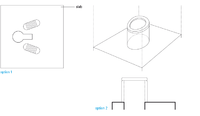
Photo from wikipedia
BackgroundAn estimated 14% of Kenyans practice open defecation. Poverty has been associated with open defecation. Kenya aims to achieve 100% open defecation free status by 2030 in line with sustainable… Click to show full abstract
BackgroundAn estimated 14% of Kenyans practice open defecation. Poverty has been associated with open defecation. Kenya aims to achieve 100% open defecation free status by 2030 in line with sustainable development goal number 6. Using data from 3 national household surveys, this study sought to explore progress made in attaining this at the household level with a focus on poor households.MethodsKenya demographic and health survey for 2003, 2008 and 2014 respectively were analysed. Descriptive analysis and bivariate logistic regression was done with open defecation status as the dependent variable. Independent variables were poverty status, place of residence, region where household was located, absence of farm animals, gender and educational level of household head.ResultsThe most common sanitation method nationally is a pit latrine without a slab. This ranged from 35.9–37.9%. Open defecation was 16.2, 12.1 and 9.9% in 2003, 2008 and 2014 respectively. Among households practicing open defecation, 81.8, 86 and 96% were classified as poor in 2003, 2008 and 2014 respectively. Poverty, educational level of household head and residing in a rural area were the most significant predictors of open defecation. Odds ratio for poverty was 9.4 (7–12.6 95% CI), 9.4(6.6–13.5 95% CI) and 29.2 (23.3–36.8 95% CI) for 2003, 2008 and 2014 respectively. The majority of richest households transitioned from using a pit latrine with a slab in 2003 to using a flush toilet connected to a sewer in 2008 and 2014. The majority of richer households transitioned from using a pit latrine without a slab in 2003 and 2008 to using a pit latrine with a slab in 2014. The majority of middle and poorer households stagnated at using a pit latrine without a slab across the similar period. The poorest households stagnated at the open defecation stage.ConclusionThe burden of open defecation has increased among poor households, more so among the poorest. This may be attributed to non-poor households exiting the open defecation stage at a higher rate compared to poor households. Poor households may need to be targeted more if Kenya is to attain open defecation free status by 2030.
Journal Title: BMC Public Health
Year Published: 2019
Link to full text (if available)
Share on Social Media: Sign Up to like & get
recommendations!